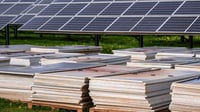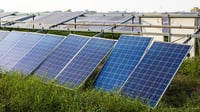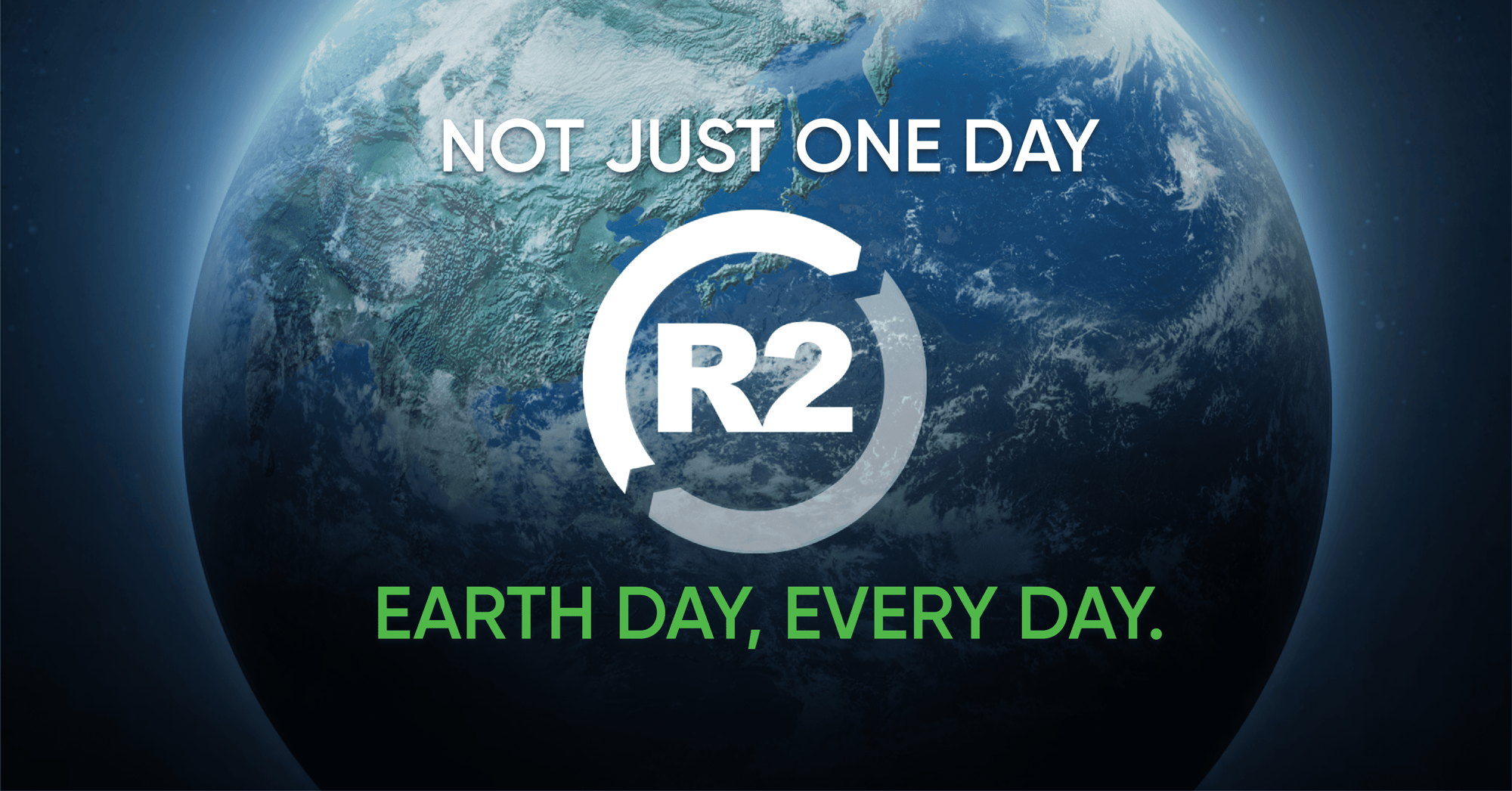Do you think that used solar panels are unsafe to reuse? Do you believe they perform at too low of power output? Do you consider all decommissioned solar panels are at their end-of-life?
If you answered ‘yes’ to any of these questions, then you have fallen prey to a common myth about used or secondhand solar panels.
The myth is, “All used solar panels are trash.”
Solar waste is broadly defined by industry members as decommissioned PV hardware, or hardware that has been taken down from an operating PV system. Projections of waste production often assume the products are at the end of their functioning lifecycles.
In fact, one of the most referenced statistics about solar panel waste comes from the International Renewable Energy Agency, which predicts cumulative global waste between now and 2050 could reach 60 and 78 million metric tons. This estimate may be realistic, and it certainly does well to support the need for a comprehensive recycling infrastructure that can break down modules and separate out valuable raw materials.
But it also points to a growing opportunity to reuse modules that come offline and are not yet ready for recycling. NREL has found that solar panels in good condition degrade at an average rate of 0.5 percent per year.
On EnergyBin, we’ve seen used solar panels for resale that were installed for just one year. In another case, a seller once listed 7-year-old modules for resale that were tested at a degradation loss of less than 3 percent. That means they were performing at 97 percent of the original power output, which is even better than NREL’s average degradation rate.
To overcome the myth, buyers must have certainty that used solar panels are safe. They must know the modules’ tested power output. And they must have a guarantee that the modules are functioning rather than at their end-of-life.
The R2V3 Standard from Sustainable Electronics Recycling International (SERI) published in February 2024 satisfies these buyer concerns. The international standard provides a baseline for R2 facilities to process solar panels for reuse and recycling. Such a baseline is critical for establishing a robust and sustainable secondary solar market.
In this article, we’ll explain what the R2V3 standard is and the general requirements related to solar panels to help resellers, solar equipment brokers, and recyclers take the first step towards applying for the certification process. Additionally, the article informs buyers of the benefits of doing business with an R2 facility and how to find accredited companies.
What is the R2 Standard?
The R2 Standard is the flagship program of SERI, an accredited non-profit organization based in the United States. The first version was published in 2008 followed by the second version in 2013 and the third version in 2020. The Standard establishes responsible reuse and recycling practices for the management of used electronics. These practices are recognized globally. Companies that handle used electronics, including solar panels, may apply to become R2 facilities.
Doing so comes with several benefits. Working with an R2 facility to either dispose of equipment or to buy refurbished equipment increases confidence that the equipment is managed in an environmentally friendly way. The R2 certification signifies that the company protects the health and safety of its employees and the public. It also assures that all data on devices is secure and effectively destroyed.
Why are solar panels included in the R2 Standard?
Back in 2018-2019, SERI was in the process of developing the R2V3 revision, stakeholders from the solar industry approached the organization to formally request the addition of solar panels. These stakeholders purported that solar panels are electronic devices and should be treated with sustainability in mind, particularly with respect to reuse as a hierarchy over recycling and recycling in place of landfilling.
The R2V3 Standard was published in 2020, and thereafter, the Technical Advisory Committee (TAC) launched a study to determine whether PV modules should be included. The TAC is a voluntary group of stakeholders appointed by the SERI Board of Directors who serve to provide technical and other guidance during the R2 development process.
Once it was determined that solar panels fit the scope and purpose of the R2 framework, the committee began the process of incorporating them into the Standard. The first step was to notify the American National Standards Institute (ANSI) of the proposed change. ANSI is SERI’s accredited national partner.
Then, SERI invited members from the solar industry to join the TAC. The committee worked to develop the draft, which was released for two public comment phases. The feedback received was incorporated into the Standard, and the final draft was presented to SERI’s Board of Directors and ANSI for approval. The new Appendix G section for solar panel reuse and recycling was accepted on January 31, 2024.
What's in Appendix G?
It’s important to note that the R2 Standard is made up of two main sections. Section 1 is about core requirements, and Section 2 is about process requirements. Although Appendix G, which is a segment of Section 2, is specific to solar panel reuse and recycling, an R2 facility must put into practice all core requirements and any relevant process requirements.
Section 1 – Core Requirements
Core requirements are applicable to all R2 facilities to ensure they are managing electronics and PV modules in accordance with the hierarchy of reuse before recycling. Facilities must track the throughput of the material coming in and going out, specifically that they properly handle focus materials (such as solar cells) as well as proper transportation of those materials.
Section 2 – Process Requirements
Process requirements correspond to facilities that are carrying out respective processes within their operations. The section consists of seven appendices. A facility may not need to follow all appendices if any one appendix doesn’t fit with their business model. For example, Appendix G is specific to solar panels but also refers to other appendices such as A – Downstream Recycling Chain and C – Test and Repair.
Depending on your business model, all appendices may apply. Briefly, these appendices are:
Appendix A – Downstream Recycling Chain
Appendix B – Data Sanitization
Appendix C – Test and Repair
Appendix D – Specialty Electronics Reuse
Appendix E – Materials Recovery
Appendix F – Brokering
Appendix G – Photovoltaic Modules
Reading through Appendix G, one will find several key requirements specific to handling used solar panels. The appendix communicates a process for evaluating hazards related to solar panels. It also defines parameters for reuse, which include following all requirements of Appendix C, such as the determination that the panels are safe for reuse, that they’re not subject to a recall, and that they’re functioning as intended for reuse in a safe manner. Additionally, the following must be disclosed to the buyer:
- The total power output of the panel in watts as measured through and normalized to standard test conditions.
- The ratio of power output to the originally designed level, expressed as a percentage of the original.
- All repairs that were made to the module.
- The appropriate R2 Equipment Categorization, or equivalent internal categories, for Functioning Product.
Furthermore, Appendix G specifies how solar panels should be handled when transferred to a downstream vendor for testing, repair, and refurbishing as well as recycling.
Where can I find an R2 Facility?
If you’re looking for an R2 Facility to partner with or to buy from, you can look up certified companies in SERI’s directory. Search by name, geographic location, or by facility features.
Additionally, EnergyBin can help you find a qualified partner. Within the EnergyBin exchange, a member who is R2 certified can upload their certificate to their Company Profile and sync their profile with their R2 directory listing. Likewise, members can search for R2-certified companies directly within the EnergyBin platform.
If you’re not an EnergyBin member but need help connecting to an R2-certified company, contact us. We’re happy to help.
How do I begin the R2 certification process?
To learn more about becoming an R2 Facility, review the steps on SERI’s website. Getting certified takes an average of 8 to 12 months to complete. You may find it helpful to work with a consultant.
Upon completion of your R2 certification, contact EnergyBin to request your business listing in our Company Directory. Plus, ask how we can help you remarket used solar panels on our B2B global trading exchange.
More Resources
 Resell or Recycle: A Guide for Handling Used Solar Panels
Resell or Recycle: A Guide for Handling Used Solar Panels
 PV Hardware & Repowering Projects: Buying New and Reselling the Old
PV Hardware & Repowering Projects: Buying New and Reselling the Old
